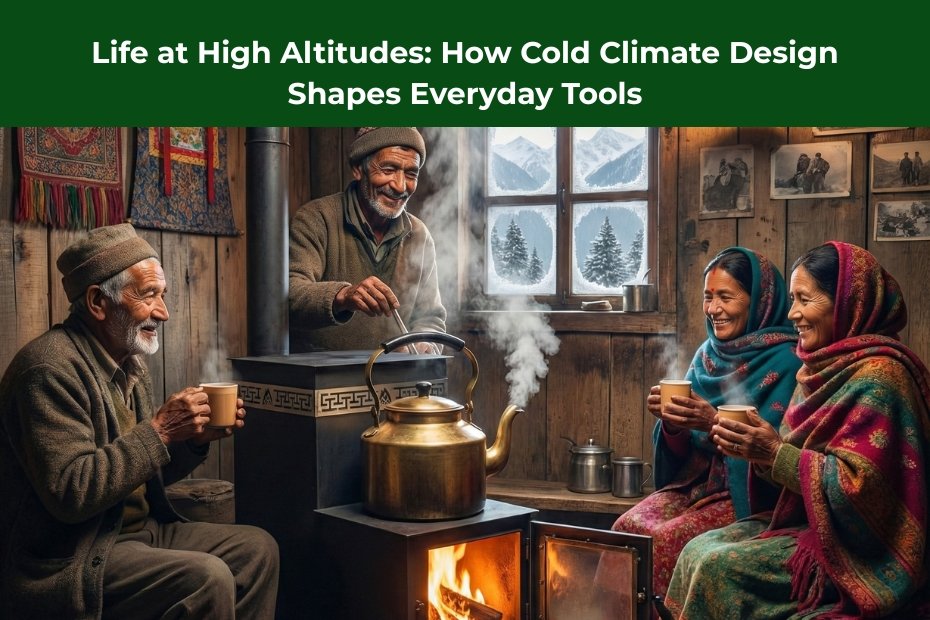Living in high-altitude areas is an experience that other places can’t provide. There is less oxygen in the atmosphere, the weather is cold and the ground is often in such a state that only the most resilient people and the most reliable tools can survive there. People in the Himalayas and other mountainous regions have to constantly adapt to the situation, and the design of the products they use is not only for comfort but also for survival.
Heating and cooking systems are the tools that have been most influenced by these harsh conditions and they are at the center of daily life. A product like a rocket stove is, therefore, not simply an appliance, but a necessity.
Surviving the Cold: Why Design Matters More at High Altitudes
Temperatures are capable of falling to very low levels at high altitudes and this is particularly true during the long, cold winters. Conventional open-fire systems heat up quickly, consuming a lot of wood, and thus smoking up the house. In a place where each degree of heat is very important, inefficient systems are more than just an inconvenience; they can even be life-threatening.
Cold-climate design that is well thought out is what makes the difference in this case. High-altitude tools must do more with less: more heat from less fuel, more efficiency with less oxygen, and more safety with fewer resources. Rocket stoves are the perfect example of such principles in practice.
Rocket Stoves: Tools Designed for the Mountains
Rocket stoves are typical cooking systems but they use airflow dynamics to create hotter, cleaner, and more efficient combustion. This is the reason why they are placed among the best wood burning stoves for high-altitude living; they are meeting the particular needs of the environment.
The design allows for:
- Rapid ignition even when the air is thin and cold
- Highly efficient burning thus less smoke
- Full heat production necessary for both cooking and heating the living space
- Less consumption of fuel thus trees in the vicinity are safe
Each one of these features has a momentous influence at high altitudes where the supply of fuel is scarce and the winters are long.
Tools That Become Part of Culture
In high mountain communities, tools are not isolated from the culture, they influence the daily life with their rhythm. Be it the case of making tea at dawn, cooking for large families, or warming up on a cold evening in the corner of the house, heat is placed at the center of the house.
A well-designed stove goes beyond a just machine. It is:
- A place for family to gather
- The mark of safety and comfort
- A guardian of health by means of smoke reduction indoors
- A resource saver, relieving the burden of wood gathering
In numerous ways, modern rocket stoves occupy the space that traditional fireplaces once did but with significantly greater efficiency and lower environmental impact.
Evolving Fuel Choices: Wood Pellet Stoves
As eco-friendly practices expand, the new wood pellet stoves are among the heating choices that many communities in high altitudes are exploring. They burn cleaner, produce a more consistent heat and the area needed for their storage is less thus they become a more and more popular choice in cold climates where smoke has to be minimized and heat maximized.
More Than Appliances : They Are Survival Tools
High-altitude living offers one lesson: tools must be designed with intention. Rocket stoves are not only essentials but also they are remarkable innovations that maintain good health, save energy, reduce the impact on the environment, and provide warmth even in the coldest months.
In regions with low temperatures, design cooperates between man’s creativity and nature’s requirements. And in that cooperation, rocket stoves are the ideal example of how innovation, through careful consideration, can make a difference in people’s lives.


Recent Comments